Advertorial
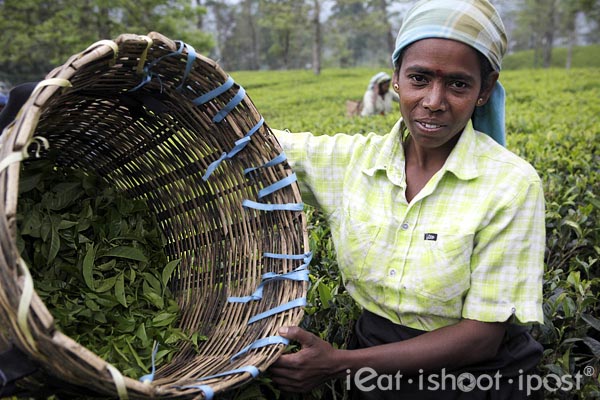
When I was a kid, Chinese Tea at the Dim Sum was simply Chinese Tea. Nobody talks about Oolong, Pu Erh or Xiang Pian (Jasmine). Nowadays, people are getting more knowledgeable about Chinese Tea and more and more restaurants are stocking boutique Chinese Teas to pair with different Dim Sum.
Now, Oolong and Pu Erh may be different types of tea but they all come from the same plant viz, camillia sinensis. However, the same plant growing in different regions and processed differently produces teas of different character. In this blog post, I will be talking about the type of tea that we all know as “Ang Moh Teh” or English Tea. Technically, this is a known as Black Tea in the West while in China it is known as “Red Tea”.
It was the Dutch which first introduced tea to the Europeans in the 17th century, but it exploded in popularity when the English got hold of it. Black Tea is what is known as a fully oxidized tea and is characterized by its deep amber liquor, astringency and briskness which pairs really well with cakes, scones, bacon and eggs which is why it is so popular around the world! It is so popular that when you ask for Tea at the restaurant, you would invariably be offered Black Tea. But have you ever given a second thought to that cup of Tea? Probably not. The reason is because Black Tea has suffered from the process of commercialization over the last few decades, so much so, that the once prized and gourmet drink has become simply “Tea”.
I recently had the opportunity to spend a few days visiting the Dilmah Tea Plantations and Tea factory in Sri Lanka and I came away with a greater appreciation of the drink which I have taken for granted. Black Tea isn’t simply Black Tea. Yes, all Black Tea is fully oxidized but there are so many different styles of Black Tea depending on how it is processed and where it is grown! For example, in India, there is Darjeeling and Assam which are Black Teas characterized by the region in India in which they are grown whereas in Sri Lanka we have what is generally called Ceylon Tea. But even within Sri Lanka, Teas produced by different regions vary in character.
What the big tea brands have done with Black Tea is to blend Black Teas from different plantations from around the world so that they produce a tea bag which has a standard characteristic taste. It’s very much like brandy which is also a blend of liquors from different estates in order to achieve a drink which is consistent year after year without seasonal variations as it with wines. Over the years, they have been able to make tea into a commodity and “trained” its consumers (us) to think of black tea as simply a cheap, nameless everyday drink without much character.
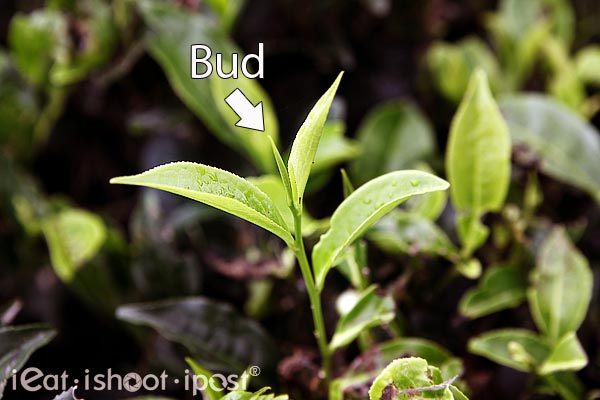
With that background in mind, let me share with your my personal journey into the re-discovery of black tea as a gourmet drink, worthy to be spoken in the same breath as the famous wines of the world.
Ceylon Tea is considered by many to be the finest in the world. The climatic conditions and soil conditions of Sri Lanka provide the optimal conditions for the production of Black Tea. However, this wasn’t realized until the mid nineteenth century when a plague of Coffee rust killed off most of the coffee plants in Sri Lanka. It was then that they started to plant Tea which has since become Sri Lanka’s biggest export.
I started my journey by visiting the Somerset Estate situated in highlands of Nuwara Eliya which was a 4 hour drive East of Colombo. If you have ever been to Cameron Highlands, then you can imagine what Nuwara Eliya looks like. The weather is cool, the foliage lush, tea bushes cover the rolling hills with spattering of Whitewash bungalows reminiscent of its colonial past. In other words, it is a place where you just can’t help but want to have an English High Tea throughout the day.
We were told that some of the best teas in Sri Lanka comes from the Nuwara Eliya region and within Nuwara Eliya, the conditions at Somerset Estate is specially ideal for producing really great tea. Because of the hilly terrain, most of the teas in Sri Lanka are plucked by hand. In other countries where tea is planted on flat plains, automated harvesters are sometimes used. But in Sri Lanka, the hills are peppered with ladies with baskets of tea leaves on their backs with the sling resting on their foreheads.
The tea bushes are kept at waist height through daily plucking of the leaves. If left to their own devices, tea bushes can grow into tall trees! However, the ladies often carry a stick which they lay horizontally on top of the bushes so that they can keep the bushes at the same height. Strictly speaking, only the bud and the next two young leaves are plucked as they make the best tea. The bud is the most prized as it contains the highest amout of polyphenols. White tea is made purely from these buds and lightly processed to produce an intensely aromatic brew which is high in antioxidants. Most of the time, however, the bud and the young leaves are collected in the baskets and transported to the factory for processing.
Once it reaches the factory, the leaves are first laid out on withering troughs where fans circulate the air above and below the leaves which are turned a few times during the withering period which lasts for about 24 hours. By the end of the withering process, the leaves would have lost some moisture and become soft and pliable. At this stage they are then transported to automated rollers which roll the tea leaves which used to be done by hand in the days before automation. The rolling stage is what sets the Orthodox process apart from the newer CTC (crush, tear, curl) process. It is at the rolling stage where the cells of the tea leaves are bruised and this sets off a series of chemical reactions which produces fragrance. The CTC process was developed as a quick and cost saving method of processing black tea for colour, body and astringency and is the most common method of processing teas that go into your 10 cent tea bags!
After rolling, the teas can be left to oxidized and then processed and sold as full leaf teas. However, to produce tea for tea bags the dhool is then put through the rotavane which cuts the leaves into smaller pieces. These are then sifted and the larger pieces are put through another rotavane until the dhool is of a certain size. They are then left to ferment for about 3 hours. This is where the green dhool turns into the familiar brown colour. Once the tea maker has determined that it is ready, the dhool is then roasted to denature the enzymes and stop the oxidation process. The tea leaves are then shifted again and separated into different sizes, ready to be bagged and sold to tea merchants from around the world!
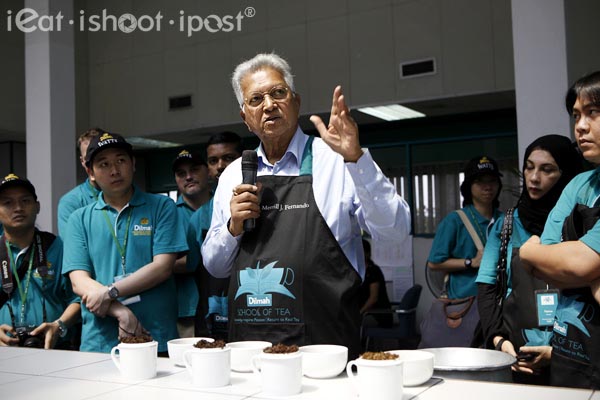
I had the privilege of speaking to Merril J Fernando, the founder of Dilmah Tea whose vision was to preserve the artisanal nature of black tea by producing single origin teas processed in the traditional Orthodox method. Mr Fernando, who is 82 this year had spent 60 years of his life dedicated to tea making. His dream of producing the finest Ceylon tea in the world come to fruition in 1988 when he founded Dilmah Tea. He started Dilmah (named after his sons Dilhan and Malik) at a time when commoditization of tea was started to take place and he knew that he had to somehow preserve the true character of Ceylon Tea. He was also concerned that middlemen tea traders who were exploiting the tea plantations. Today, Dilmah is one of the top ten tea brands in the world and the only major tea brand which can claim to be an integrated company which owns the tea plantations, process the tea leaves and packages the tea for sale. In this way, not only does Dilmah guarantee that all the tea produced are of a single origin and processed in the orthodox way, but that the money made from the tea remains in Sri Lanka.
The exploitation of Tea Plantation workers around the world is something that perhaps we don’t think much of when we drink that cup of tea. But only a small fraction of that 10 cent tea bag actually goes back to the people who actually produce the tea. One of the things that I was very impressed with Dilmah is its commitment to plough back 10% of its profits into benefiting the people of Sri Lanka. The MJF foundation is the social arm of Dilmah which is involved in many social enterprises from building schools and hospitals in around their tea plantations to sponsoring scholarships and enterprises to even nature conservation. You can read about their work by clicking on this link.
In case, you are wondering whether all the social work is all media hype since we were visiting the plantation at Dilmah’s invitation, (I was wondering the same thing at the end of my tour) the final proof in the pudding came along at the airport when we were buying some teas home. We met the stall keeper at Dilmah’s airport store who had no idea that we had attended the Dilmah School of Tea. When we started talking about their founder, Mr Fernando, the lady couldn’t stop saying how much he had loved and helped the people of Sri Lanka! Her passion and love for the founder convinced me that Mr Fernando has really touched the lives of the Sri Lankan people and lived up to its motto that “Business is about Human Service”.
Conclusion
So next time you pick up that packet of Tea Bags, just stop and think about what is actually in that Teabag. How is the tea processed? Where does it come from? How fresh is it? Are workers being exploited? Dilmah is still very much a family run company and just about the one brand on your supermarket shelf where you can bypass the middleman and buy direct from the Tea manufacturer. Their teas are not only made with passion but they are doing it in an ethical manner so that with every pack of Dilmah tea you buy, you are contributing to the work of the MJF foundation and helping the people of Sri Lanka!
Sign up for a Free Trial Pack
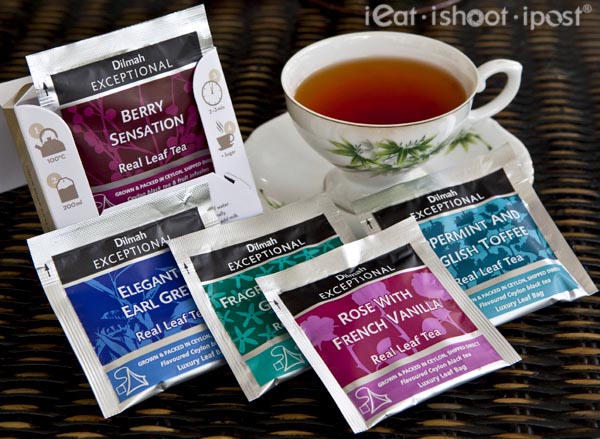
Over the last two months, I have been comparing Dilmah teas with the other brands and I am now a big fan of their teas. I am sure if you taste it for yourself,. you too will be convinced that they produce very good tea. Dilmah has just introduced their “Exceptional” range of flavoured teas in Singapore and you can get a pack of 6 flavours sent to you absolutely free! All you have to do is to sign up at http://dilmah.sg/trial-signup/.
Find out more about Dilmah Exceptional here.
Find out more about what Dilmah is doing for the people of Sri Lanka here.



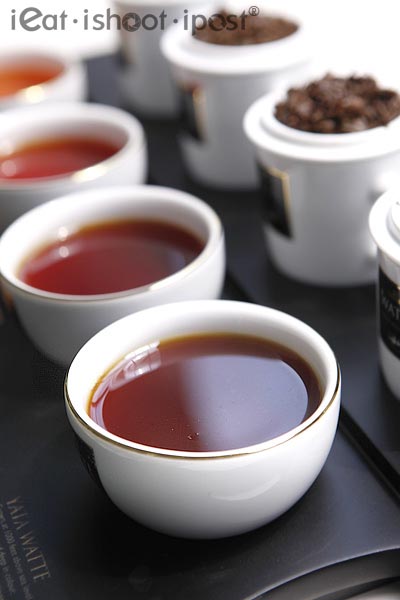
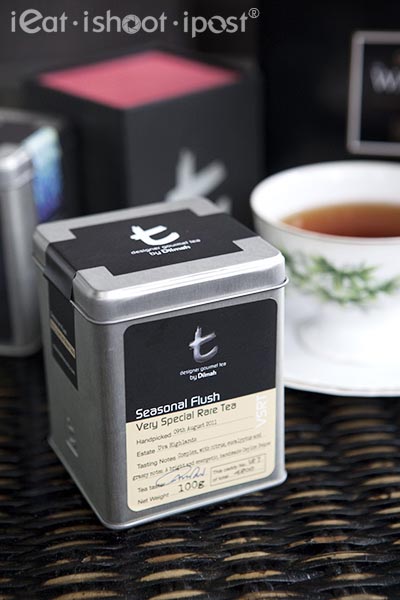
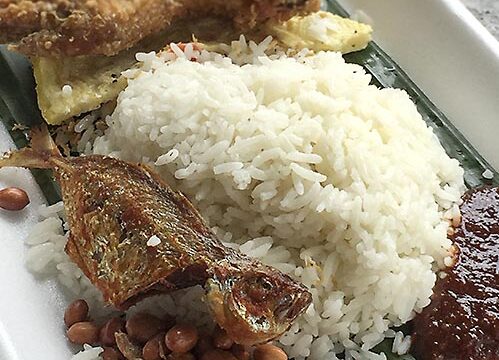
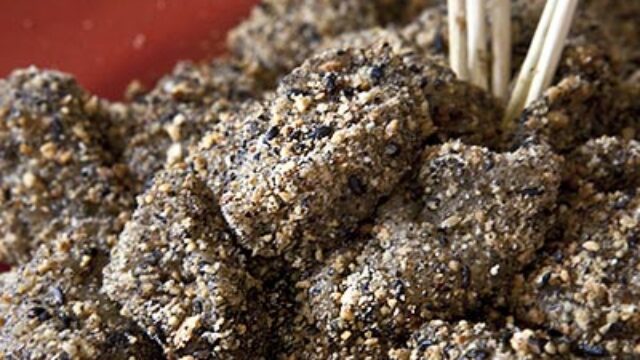



Just saw your post on Dilmah tea.
How do I buy direct from Tea manufacturer and bypass the middleman?
Where can I buy Dilmah flavoured tea in Singapore?